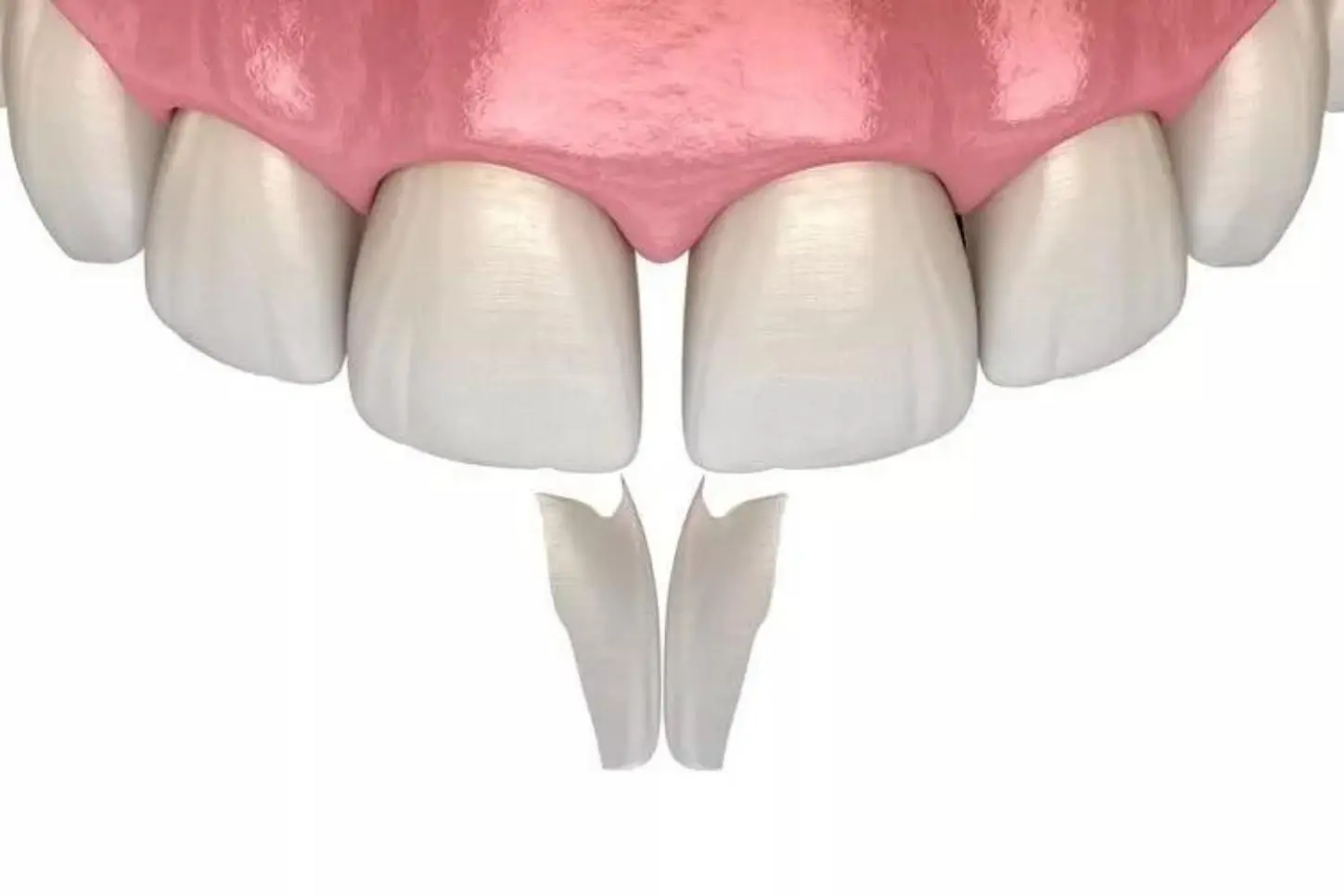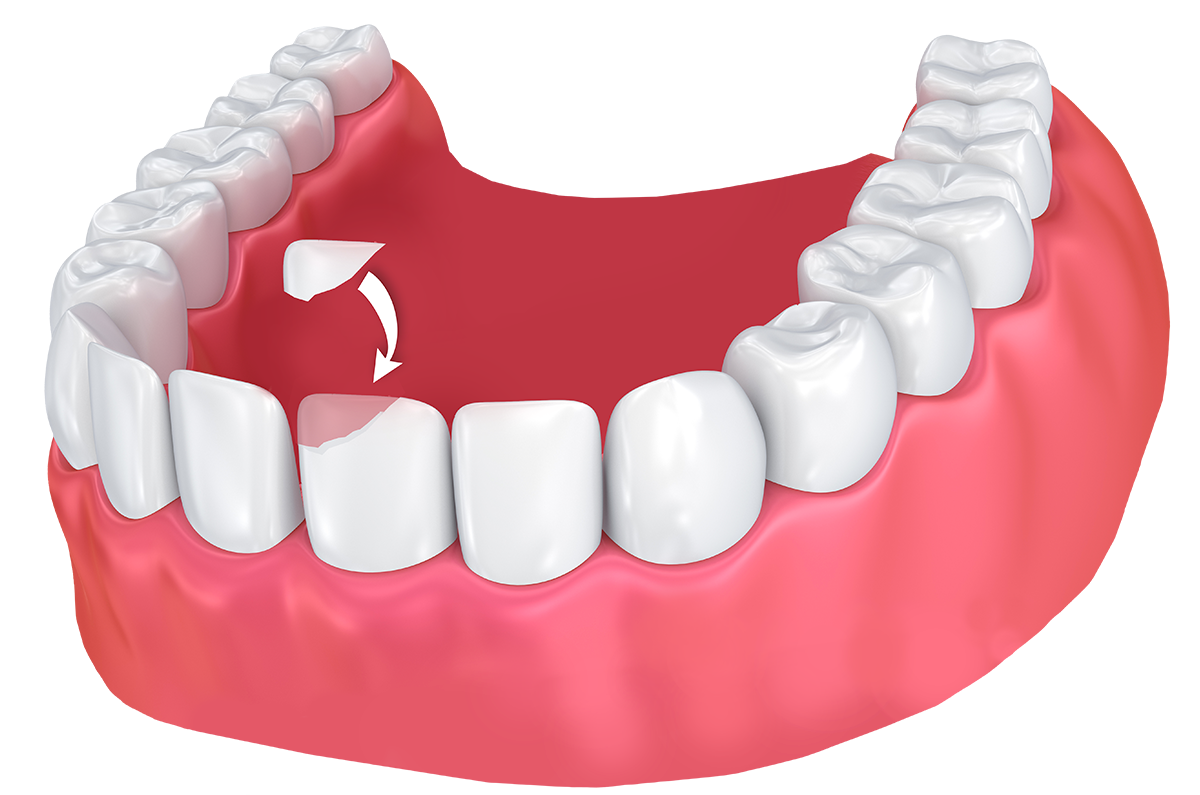- Treatments / Composite Bonding
Composite Bonding

Changes in tooth colour, fractures, or crooked tooth structure adversely affect an aesthetic tooth structure. This situation can cause people to be dissatisfied with their tooth structure and sometimes hesitate to smile. Dentists can provide ideas on what to do for those who want the smile of their dreams. Today, people practice various dental treatments to have an aesthetic smile.
Composite Bonding, also known as Composite Veneer, is one of the popular applications of recent times. It is one of the most preferred veneer techniques because it is a successful and effortless treatment. Thanks to Composite Bonding, the imperfections on the tooth surface are intervened, and people get the smile of their dreams.
What is Composite Bonding?
Composite Bonding is a type of dental veneer applied to change the colour or structure of anterior teeth. With the treatment in which composite resins have adhered to the anterior teeth, anterior teeth can be covered entirely. Composite Bonding gives a natural tooth appearance, providing light transmittance and identifying with the other teeth of the person. Being a treatment that applying in a single session increases the preferability of the treatment.
Laminates, coating the tooth surface without damaging the tooth, ensure that the treatment is reversible. Composite Bonding is an extremely effortless application, as feeling no pain during the treatment. After the preliminary examination at Prof. Dr Ozyesil Clinic, Composite Bonding is planned, and patients get perfect teeth in a single session.

How is Composite Bonding Treatment Performed?
Composite Bonding treatment is a painless treatment method. In the preliminary examination, the patient’s general oral health is evaluated. The health status of the teeth planned to be veneered is examined. These treatments are performed first in case of tooth decay or filling that needs to be changed. General tooth cleaning is recommended before veneers. This way, a perfect image can be obtained with composite Bonding. In addition, the teeth are protected against possible tooth decay.
Depending on the surface of the teeth, small filing operations can be performed on the tooth surface. Prof Dr Ozyesil, as an expert dentist, emphasizes the importance of filing and performs extra care in this step. In this way, it prevents damage to the tooth enamel.

The patient and the dentist determine the appropriate composite laminate colour. Mixed colour is selected considering the target of the treatment. After the laminate is chosen, it is time for the bonding process. A particular acid substance is used on teeth free from tartar or bacteria.
Prof. Dr Ozyesil considers patients’ health using quality materials at all stages. With these quality materials, the tooth surface is made rough. Then, the bonding material, which acts as an adhesive, is applied, and the composite laminates have adhered to the tooth surface. Moreover, Blue light therapy is used to harden the implemented materials. After Composite Bonding hardens, the dentist shapes the laminates to match other tooth sizes. After all processes, the treatment is completed by polishing.
What is the Difference Between Porcelain Veneer and Composite Bonding?
Patients who will have a veneer may experience indecision between the two veneer types. Choosing the most appropriate treatment requires consideration of both the dentist’s advice and the patient’s wishes. Porcelain Veneer treatment is a strong and durable treatment, and being an irreversible treatment is the main difference with Composite Bonding. In porcelain veneers, rasping processes are applied to the tooth enamel. This way, the veneer can be placed on the tooth. Unlike Composite Bonding, Porcelain Veneers cover the entire surface of the tooth.
Everybody knows that porcelain veneers are more durable and long-lasting than Composite Bonding. In Composite Bonding, due to careless use, breakage or small breaks at the ends of the tooth may occur, and porcelain Veneers are more resistant to impact.
While Composite Bonding is a treatment completed in a single session, Porcelain Veneer treatment is completed in 2 or 3 sessions, depending on the number of teeth. The dental measurements are used to create Porcelain Veneers specific to the patient’s mouth and tooth structure. The veneers are then practised before they are placed on the teeth.
Finally, one of the main differences between Composite Bonding and Porcelain Veneers is their application area. While Porcelain Veneers can be applied to all teeth, Composite Bonding is applied to the anterior surface of the anterior teeth.
After the preliminary examination, Prof. Dr Ozyesil shares with his patients which treatment is more suitable. Patients can decide on the ideal treatment by considering their wishes.

How Long Does Composite Bonding Last?
The duration of use of Composite Bonding is related to the person’s attention to oral and dental health. Veneers with a lifespan of 5 or 15 years are long-term treatments. The quality of the materials used in Composite Bonding and the success of the physician’s application also affect the duration of the treatment. For this reason, patients must select the clinic carefully.
Patients should also pay attention to the food consumed after Composite Bonding treatment and avoid consuming sticky foods. Moreover, the consumption of items such as coffee, tea, cigarettes, and wine that may change the colour of the laminate should be limited. Finally, patients should avoid the impact on the teeth and may extend their tooth life up to 15 years by paying attention to oral hygiene and consumed foods.
Does Composite Bonding straighten the teeth?
Bonding is used to correct a tooth’s colour, repair the chipped tooth, and correct the shape of your teeth. It is possible to straighten the teeth. If there is too much distortion, your dentist may suggest other treatments.
Is it possible to whiten composite bonded teeth?
If you do not care what your doctor recommends after Composite Bonding, your teeth may get coloured over time. Then you may want to whiten your teeth, but Composite Bonding material does not respond to the teeth whitening process. In such a case, you may replace your dental bonding since Composite Bonding is easily removable.
Can the gaps between teeth be filled with Composite Bonding?
Dental Bonding could be the best solution to minimize or close the gaps between teeth. We suggest you consult an expert aesthetic dentist for this operation.
Can the Composite Bonding be removed?
Yes, Composite Bonding is removable, and it is a reversible procedure since bonding material is attached to the surface of the teeth. The thin layer of Bonding is removed, and no harm is given to the original tooth structure.

